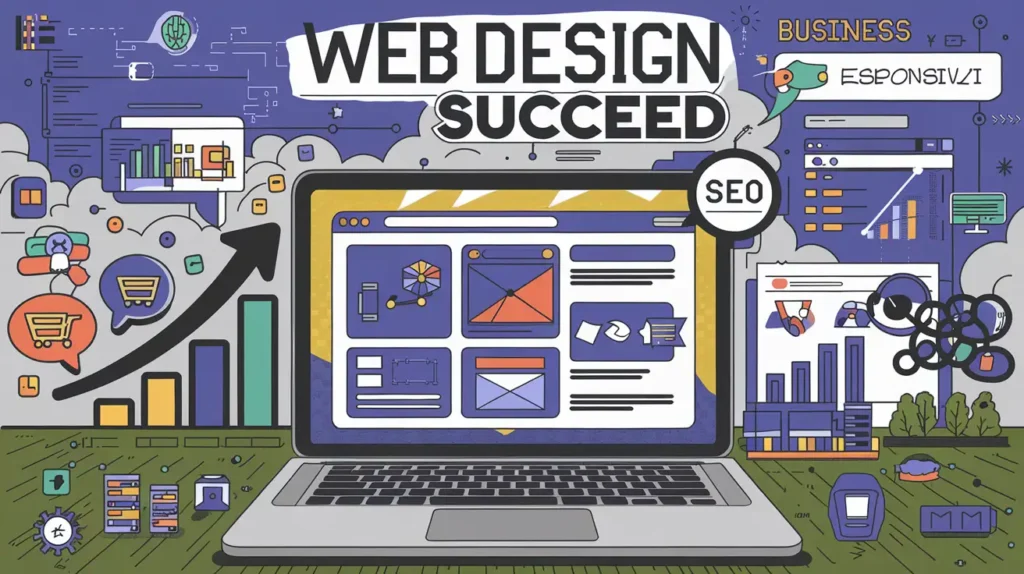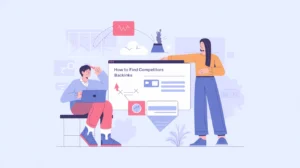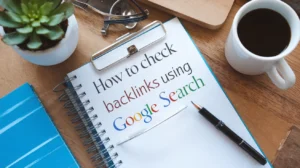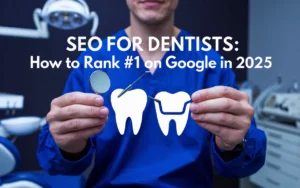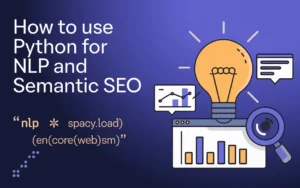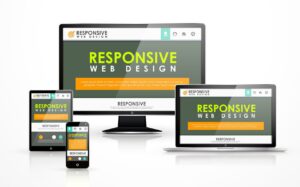Why Is Web Design Important for Businesses?
Web design is more than aesthetics; it’s critical to a business’s success. It influences how audiences perceive your brand, impacts customer retention, and affects search engine rankings. Below, we’ll explore the core benefits of investing in good web design and why businesses cannot afford to overlook this aspect of their online presence.
1. Sets the First Impression
Your website is often a potential customer’s first interaction with your business. Research shows that it takes only 0.05 seconds for users to form an opinion about your website. A visually appealing, professionally designed site creates a positive first impression, while a poorly designed website can drive visitors away.
For instance:
- An organized layout with a clear hierarchy shows professionalism.
- A cluttered design can create a sense of disorganization, making users question your credibility.
Get in Touch with Our Team

2. Enhances Brand Credibility
Would you trust a business with an outdated or unprofessional website? Probably not. A modern, polished design signals users that your business is legitimate and trustworthy. This perception directly impacts your bottom line.
How good design enhances credibility:
- Professional typography and visuals establish authority.
- Consistent branding elements (colors, logos, and fonts) reinforce identity.
- Error-free and intuitive navigation demonstrates attention to detail.
3. Improves SERP Rankings
Good web design doesn’t just look good it performs well. Factors like mobile responsiveness, site speed, and clean code structure are critical to ranking higher in search engine results. Google prioritizes websites that deliver exceptional user experiences.
Key design elements that boost SEO:
- Mobile responsiveness: A mobile-friendly design ensures your site looks great on any device.
- Site architecture: Clear navigation helps search engines crawl your site efficiently.
- Fast loading times: Slow websites frustrate users and are penalized by Google.
4. Boosts User Retention
Users who can easily find the information they need will likely stay on your site longer. A thoughtfully designed website with intuitive navigation and interactive elements keeps visitors engaged and reduces bounce rates.
Tips to improve user retention:
- Use clear call-to-action (CTA) buttons to guide users.
- Incorporate visually engaging content like images and videos.
- Optimize the layout for both desktop and mobile devices.
5. Creates a Seamless User Experience (UX)
A website that’s difficult to use frustrates visitors and pushes them toward competitors. Exceptional web design focuses on usability, ensuring every interaction feels smooth and purposeful. This is critical for driving conversions.
How to enhance UX through design:
- Use white space to make content digestible.
- Ensure fast load times for every page.
- Include accessible features like alt text and keyboard navigation.
Get in Touch with Our Team

6. Builds Trust and Loyalty
Consistency is key to fostering trust. A visually cohesive design with familiar elements ensures users feel comfortable interacting with your brand. Over time, this familiarity translates to loyalty.
Elements that build trust:
- Consistent branding across all pages.
- Secure connections (e.g., HTTPS and SSL certificates).
- Transparent, easy-to-find contact information.
Customers who trust your brand are likelier to purchase and recommend you to others.
7. Gives You a Competitive Edge
Your website is one of your most potent tools for standing out in a crowded market. Competitors constantly update their sites to reflect modern trends, and if your design falls behind, your business might, too.
Why staying updated matters:
- Industry relevance: A current design shows you’re ahead of trends.
- Customer expectations: Users expect sleek, functional designs.
- Conversion optimization: A competitive website drives more leads.
____________________
Key Elements of High-Impact Web Design
Your website’s design can make or break your business in a competitive digital landscape. A high-impact web design combines aesthetics, functionality, and usability to provide an optimal experience for visitors. Here are the 7 crucial features every quality website must have to succeed.
1. Accessibility
A genuinely impactful website is accessible to everyone, including people with disabilities. Accessibility ensures that all users can interact with your website, regardless of their abilities or devices.
Key aspects of accessibility:
- Text alternatives for images (alt text) for screen readers.
- Keyboard-friendly navigation for users who cannot use a mouse.
- Proper contrast ratios to improve readability for visually impaired users.
Get in Touch with Our Team

2. Intuitive Navigation
Navigation is the backbone of user experience. If users can’t easily find what they’re looking for, they’ll leave fast. Clear, intuitive navigation ensures visitors stay longer and explore your site further.
Best practices for intuitive navigation:
- Use a simple and logical menu structure.
- Include a search bar for quick access to information.
- Highlight key pages with breadcrumbs or drop-down menus.
Users who can effortlessly explore your website are likelier to become loyal customers.
3. Responsive Design
With over 60% of web traffic coming from mobile devices, responsive design is non-negotiable. A responsive website adapts to different screen sizes, ensuring an optimal smartphone, tablet, laptop, and desktop experience.
Why responsive design matters:
- Enhances mobile user experience, boosting engagement.
- Improves search engine rankings as Google prioritizes mobile-friendly sites.
- Reduces bounce rates and increases retention.
4. Purposeful Visuals
Visual content like images, videos, and infographics aren’t just decorative—they’re powerful tools to engage users and communicate your brand message. However, they must be purposeful and high-quality to make an impact.
How visuals enhance your site:
- Capture attention and evoke emotions.
- Simplify complex information with infographics.
- Increase content shareability on social media.
5. Fast Page Loading Speed
Page speed is critical for both user satisfaction and search engine rankings. Studies show that 53% of users abandon a site if it takes more than 3 seconds to load. A slow website not only frustrates visitors but also impacts your bottom line.
Ways to improve load times:
- Optimize images and compress files.
- Use a reliable hosting provider.
- Implement caching and minimize unnecessary scripts.
Get in Touch with Our Team

6. Brand Consistency
Your website should be a seamless extension of your brand. Consistent use of logos, colors, and fonts across all pages builds recognition and trust among your audience.
Why brand consistency matters:
- Creates a cohesive and professional look.
- Reinforces your brand identity in users’ minds.
- Builds credibility and trust with customers.
Consistency shows that your business pays attention to details, which translates to better customer loyalty.
7. Calls-to-Action (CTAs)
Strategic CTAs guide users toward desired actions, such as signing up for a newsletter, purchasing, or booking a consultation. Without effective CTAs, your website might fail to convert visitors into customers.
Tips for effective CTAs:
- Use action-oriented language like “Get Started” or “Sign Up Now.”
- Place CTAs in prominent areas (e.g., above the fold).
- Ensure CTAs are visually distinct with contrasting colors and bold text.
____________________
Benefits of Investing in Professional Web Design
Investing in professional web design is one of the most intelligent decisions a business can make. A well-crafted website goes beyond looking good it drives measurable results, such as increased traffic, higher conversion rates, and better customer retention. Here’s how professional web design directly contributes to business growth.
1. Increases Organic Traffic and Transactions
A professionally designed website is optimized for search engines and user engagement, leading to a steady increase in organic traffic. For eCommerce businesses, this translates into more transactions and revenue.
Key impacts of professional design on eCommerce:
- Optimized product pages: High-quality images, detailed descriptions, and clear pricing build trust and encourage purchases.
- SEO-friendly structures: A well-organized site hierarchy improves visibility in search results.
- Mobile-friendly interfaces: Mobile-first design ensures smooth browsing and buying experiences on smartphones and tablets.
2. Boosts Conversion Rates
Every design element, from landing pages to checkout flows, affects how users interact with your site. Professional web design ensures that your website attracts visitors and converts them into paying customers.
How design improves conversions:
- Compelling CTAs: Strategically placed and visually distinct call-to-action buttons guide users toward taking action.
- Streamlined checkout processes: Reduce friction in completing purchases to minimize cart abandonment.
- A/B testing: To maximize effectiveness, designers can test and refine elements like layouts, colors, and CTAs.
3. Builds Long-Term Partnerships with Customers
Your website serves as a digital handshake with your audience. A thoughtfully designed site leaves a lasting impression, fostering trust and encouraging repeat visits. Over time, this strengthens customer relationships and loyalty.
Ways professional design fosters lasting connections:
- Personalization features: Show users that you value their preferences.
- Engaging content layouts: Well-designed blogs, galleries, and testimonials keep users returning.
- Consistent branding: A cohesive visual identity ensures your business remains memorable.
Customers are more likely to recommend and return to brands they trust. A professional web design ensures your website becomes an indispensable part of their journey.
4. Enhances ROI
Professional web design is not just an expense. It’s an investment that often pays for itself. A well-designed website improves efficiency, increases customer acquisition, and drives greater profitability.
How design maximizes ROI:
- Higher traffic and conversions mean more revenue opportunities.
- Reduced bounce rates improve the likelihood of engagement.
- Integrated analytics and tracking enable data-driven decisions to optimize performance.
When your website performs exceptionally well, it enhances the ROI of all your marketing efforts, from paid ads to social media campaigns.
____________________
How to Choose the Right Web Design Partner
The right web design partner is crucial in building a successful online presence. A good partnership can ensure your website reflects your brand, engages your audience, and achieves your business objectives. Follow this step-by-step guide to make an informed decision.
1. Define Your Website Goals
Clarify your goals and objectives before looking for a web design partner. A well-defined purpose will guide the design process and help you communicate your needs effectively.
Questions to ask yourself:
- What is the primary goal of your website? (e.g., lead generation, eCommerce, brand awareness)
- Who is your target audience, and what are their preferences?
- What specific features or functionalities do you need? (e.g., payment gateways, blog sections, customer reviews)
By having clear goals, you’ll be better equipped to evaluate whether a web design agency can deliver on your vision.
2. Set a Budget
Knowing your budget upfront allows you to focus on agencies that can provide quality work within your financial limits. While it’s tempting to go with the lowest bidder, remember that web design is an investment, and quality often correlates with cost.
Budgeting tips:
- Allocate 10–15% of your overall marketing budget to web design.
- Be clear about what’s included in the cost (e.g., hosting, maintenance, additional features).
- Plan for future scalability to avoid unnecessary redesign expenses.
A transparent discussion about the budget ensures that you and your design partner are aligned.
3. Review Portfolios
An agency’s portfolio is a window into its capabilities and style. Reviewing their previous work helps you assess whether they can deliver the design you envision.
What to look for in a portfolio:
- Diversity in design styles to see if they can adapt to your brand.
- Case studies showing how their work helped clients achieve measurable results.
- Examples of websites in your industry or with similar functionalities.
4. Explore Reviews and Testimonials
Client feedback is invaluable when evaluating potential web design partners. Reviews and testimonials provide insights into the agency’s reliability, professionalism, and ability to meet deadlines.
Where to find reviews:
- Google Reviews and other third-party platforms.
- Testimonials are featured on the agency’s website.
- Reach out to previous clients for detailed feedback.
A reliable web design agency will have a track record of satisfied customers and positive reviews, indicating their commitment to quality.
5. Understand the Web Design Process
Every web design agency has its own approach, so it’s essential to ensure their process aligns with your vision and expectations. A transparent and collaborative process leads to better results.
Questions to ask about the process:
- How do they gather and incorporate client input?
- What are the key milestones, and how will progress be communicated?
- Do they offer post-launch support, such as maintenance and updates?
A clear understanding of the process minimizes misunderstandings and ensures a smoother journey to launching your website.
____________________
Tools and Resources for Web Design Success
A successful website requires the right blend of tools, resources, and expertise. With access to industry-leading platforms and expert guidance, businesses can streamline their web design process and build a website that drives growth. Below are some essential tools, resources, and expert tips to help you achieve web design success.
1. Best CRM Tools for Web Design
Customer Relationship Management (CRM) tools are vital in connecting web design with your overall business strategy. Integrating a CRM into your website enables you to manage leads, track customer interactions, and align your design with sales and marketing goals.
Top CRM platforms for web design:
- HubSpot CRM: Known for its user-friendly interface and seamless integration with websites, HubSpot helps automate marketing and sales tasks while improving customer experience.
- Salesforce: Offers advanced analytics and customization options, making it ideal for businesses that require in-depth customer insights.
- Zoho CRM: A budget-friendly tool for small businesses, Zoho simplifies customer data management while integrating with web design platforms.
The right CRM ensures your website looks great and contributes to your sales and customer retention strategies.
2. Resources to Boost Your Web Design Knowledge
Whether you’re a beginner or an experienced professional, staying updated with the latest web design trends and techniques is crucial. Leverage these resources to sharpen your skills and stay ahead in the digital space.
Recommended resources:
- eBooks and Guides:
- “Don’t Make Me Think” by Steve Krug: A classic guide on intuitive web design.
- Free guides from The Website Exchange: Learn about web design strategies tailored for business growth.
- Tutorial Platforms:
- Udemy: Offers affordable courses on various web design tools and techniques.
- Coursera: Provides professional certifications from top universities.
- FreeCodeCamp: Perfect for beginners looking to learn the basics of web development and design.
These resources can empower you to make informed decisions when collaborating with a web design partner.
Learn more about Squarespace and its powerful website-building features here
3. Expert Tips on Creating a User-Friendly Website
A user-friendly website ensures a seamless experience for visitors, increasing engagement and conversions. Here’s advice from web design professionals to help you prioritize usability in your projects:
- Focus on Navigation: Keep your navigation simple and intuitive. Include a search bar and clearly labeled menu items to guide users.
- Optimize for Mobile: Ensure your website is fully responsive, as over half of all web traffic comes from mobile devices.
- Prioritize Speed: Compress images, leverage browser caching, and use a reliable hosting provider to reduce load times.
- Emphasize CTAs: Place clear, actionable CTAs in prominent locations to encourage user engagement.
- Test Before Launch: Conduct usability testing to identify and resolve any pain points in the user journey.
____________________
Take the Next Step Towards Better Web Design
A high-quality website is more than just a digital presence—it’s a powerful tool for driving growth, building trust, and achieving business objectives. Whether revamping an existing site or starting from scratch, partnering with experienced web design professionals can make all the difference.
1. How Professional Agencies Deliver Results
Professional web design agencies bring a wealth of expertise, ensuring your website isn’t just visually stunning but also functional and performance-driven. Their experience spans diverse industries, enabling them to tailor solutions that align with your unique business goals.
Why expertise matters:
- Strategic insight: Agencies understand how to balance aesthetics with functionality to deliver optimal user experiences.
- Technical proficiency: They ensure your site is mobile-friendly, SEO-optimized, and scalable.
- Ongoing support: Post-launch services like maintenance, updates, and analytics keep your site performing at its best.
2. Achieve Business Goals Through Custom Web Design
A custom-designed website directly reflects your brand’s identity and values. It’s not just about standing out; it’s about meeting your business goals efficiently and effectively.
How custom web design drives results:
- Enhanced user engagement: Tailored designs captivate your target audience and encourage action.
- Improved lead generation: Strategic layouts and CTAs guide visitors toward conversions.
- Stronger branding: A cohesive design reinforces your brand image and builds trust.
Let The Website Exchange craft a site that supports your vision and goals.
____________________
Conclusion
Web design is an investment in your business’s future. A well-designed website attracts visitors, fosters trust, and drives conversions, ultimately contributing to long-term growth. From increasing organic traffic to building lasting customer relationships, the impact of professional web design cannot be overstated.
Partner with The Website Exchange to transform your website into a business growth engine. Contact us today to get started on your journey to better web design.

